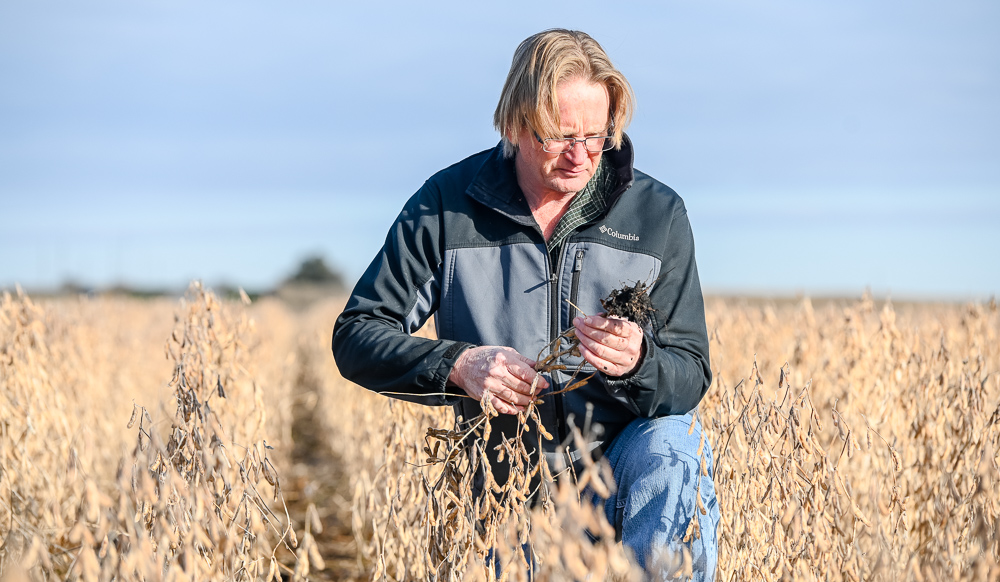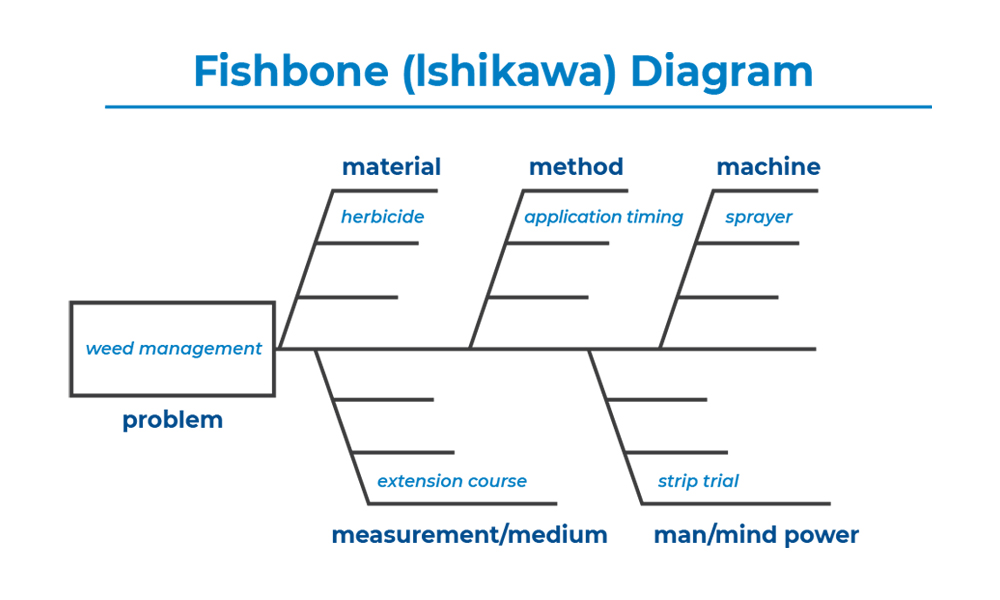
Scott Nelson examines the roots of a soybean plant. Nelson recommends utilizing a fishbone diagram to help with crop and input decisions. (Photo: Joseph L. Murphy/Iowa Soybean Association)
Stop chasing ghosts
December 3, 2020
Each year farmers are presented with many choices in new products, technology, and equipment. However, knowing which technologies and products to invest in can be a daunting task. In this article, we present a simple tool to help you think through your farm input investments.
“Chasing ghosts” is when farmers implement new technologies that won’t have the highest impact on their farm. For example, while the planter is one of the most important tools on the farm, investing in new planting equipment may not address the most limiting factors on your farm. Farm input decisions should be made based upon what is the most limiting factor on your farm, not which inputs get the most advertising.
To help you understand your most limiting factors, fill out the fishbone diagram accompanying this article. This diagram, created by Kaoru Ishikawa, helps lay out a problem and further cause and effect relationships.

Fishbone diagram adapted for use in decision making. (By Ashton Boles, ISA creative manager)
Start with a specific problem you want to address on your farm. Is it herbicide resistant weeds? Below average yields in some fields? Starting with a specific problem statement for your farms is the most important step in avoiding disappointment with input decisions.
The next step is to think about the causes of the problem. If weed management is the problem, then you might put herbicide product under “Materials”. Under “Methods”, you might want to say application timing, if for example weather is preventing you from getting timely applications. This could lead into “Equipment” where you contemplate if your sprayer is big enough to apply product in a timely fashion. These are just examples and could be used for any problem. The big idea is that you take control of your input decisions through a better understanding of your limiting factors.
Finally, do not forget the “Mind/Power” and “Measurement Components”. For example, under mind power, you might decide you do not have enough information on a subject, say soil fertility. Rather than investing in a new foliar product, your investment might be better spent on an extension course or an independent agronomist. The last step is probably the hardest for farmers: measurement. If you do not do a side-by-side or a strip trial, you won’t know whether the investment paid.
Iowa Soybean Association has a wealth of technical experts in agronomy and conservation willing to help you assess your farm’s needs. Set up a time with one of our staff to talk through the fishbone diagram for your farm.
Back